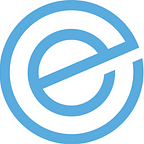DLC® Premium Analysis: How are utilities supporting it?
We are examining the use of the DesignLights Consortium® (DLC®) Premium classification in US and Canadian electric utility programs. The DLC Premium designation has existed since 2015. Since then, adoption of this concept into utility programs has been by a small select group. When we last covered this topic in our newsletter at the very end of 2018, several utilities have dropped any specific support for DLC Premium. It’s current primary differentiator from DLC Standard is efficacy, but DLC V5.0 is enhancing the Premium concept later this year. We will cover the current usage of DLC Premium by geography, and in detail by program and category.
Research Highlights
The map above illustrates the states that contain at least one utility that either requires DLC Premium or offers higher rebates for DLC Premium. We have identified 3 levels of program support:
- Dark Green — Multiple categories offer higher incentives for DLC Premium over DLC Standard
- Medium Green — DLC Premium is required for at least one category, rebates are not offered for DLC Standard in those categories
- Light Green — DLC Premium differentiated rebates are offered for a very limited number of categories
The increase in rebate for DLC premium vs DLC Standard overall is between 3% and 50%, but varies greatly by program and category.
Influence of DLC Premium on C&I market
Utilities offering Premium rebates: 73 (out of approximately 1,000 that offer C&I rebates)
- Investor-owned utilities : 10
- Municipal/Co-ops: 63
Total number of commercial electric accounts in US: 19,350,000 (approximate from 2017 EIA)
Total number of commercial electric accounts in DLC Premium utilities: 2,140,000
% of commercial electric accounts in DLC Premium utilities: 11.1%
DLC Premium Utility Program Reviews
- PG&E/SCE — These California utilities have limited their rebates in these categories to DLC Premium only. California’s code and regulations have limited the utilities ability to incentivize the sales of less efficacious fixtures
- EnergizeCT — Eversource and United Illuminating have full support for DLC Premium these categories. They have rebates for other categories but do differentiate for Premium
- JEA (Jacksonville Energy Authority) — Florida is not known for its lighting rebates, but the JEA is offering rebates for DLC Premium only
- Mass Save — Mass Save generally has the most comprehensive support for DLC Premium
- Bright Energy Solutions — This program is available in municipalities and co-op utilities in the upper Midwest. DLC Premium is only supported for refrigerated case lighting
- Efficiency Nova Scotia — This Canadian utility offers DLC Premium support for High Bays only
- National Grid NY — This program generally offers comprehensive support for DLC Premium
- Hydro Quebec — This program has an unusual design based on ranging rates for kilolumens, so difficult to generalize, but does offer higher incentives for DLC Premium
- National Grid Rhode Island — This program generally offers comprehensive support for DLC Premium
DLC® V5.0/V5.1
The new DLC SSL 5.0/5.1 standard adds complexity to the DLC Premium calculus. Let’s break it down:
- Efficacy — The efficacy requirement changes to straight +15. Given that most standard efficacies are 100 or greater, at-the-requirement comparisons will be at most 15% compared to 23% in our 4.4 example
- 5.0 Premium continuous dimming requirement — Stepped dimming does not meet DLC Premium requirements
- 5.1 Premium Spectral requirement — Glare and chromaticity are now part of meeting DLC Premium
What are the utility programs going to do with regards to 5.0/5.1 Premium? So far, utilities have not released any specific plans. But using some history and knowledge about utility regulators, we can pose and try to answer some questions.
Will more utilities explicitly support DLC Premium?
Given the recent trends in DLC Premium adoption (or abandonment), it is difficult to imagine that more utilities will suddenly support DLC Premium. The minimum efficacy increases are minor generally, and since most utilities are judged on kWh and kW savings, there isn’t much justification for adopting it. To balance that, there is some discussion about the quality of light with more progressive public utility commissions and utilities, but remains to be seen how that translates to utility program goals.
Will utilities that support DLC Premium increase the amount they are incentivizing?
It would be difficult to understand why. Utilities are also judged by the cost of acquiring energy savings, and therefore must balance any increase in dollars with a commensurate increase in energy savings, which is not warranted in this case. Again if public utility commissions can get behind some sort of additional compensation for light quality, then you may see increases.
Note to Encentivizer™ Product Awareness subscribers: The economic analysis of where DLC Standard and Premium matter is easily calculated using the Product Awareness tool. Picking an equivalent Standard and Premium fixture from your catalog in the tool enables you to quickly determine how Premium affects your products’ rebates.
Authored by Mike Cham
CTO, Encentiv Energy
